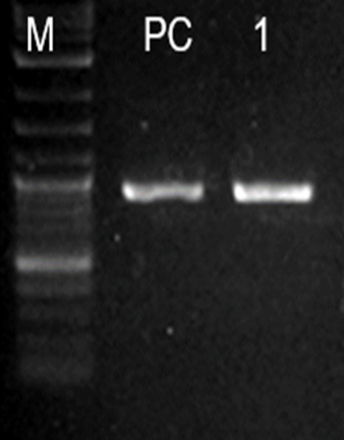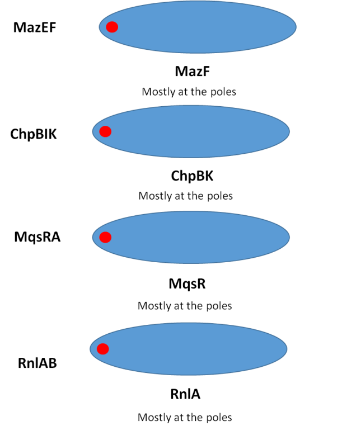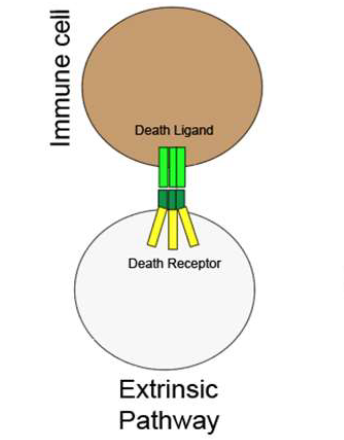Loading
Archive
Recommended Articles
The Nature of Radiation-induced Inherited Recessive Gene Mutations in Drosophila Melanogaster
The nature of gene mutations induced by ionizing radiation in germ cells and transmitted to offspring remains one of the most important problems in radiation genetics of higher eukaryotes. The data accumulated in this field were obtained by different authors under different experimental conditions which does not give a complete insight about the nature of radiation-induced inherited mutations at different genome levels (chromosome, gene, DNA).
Karyotypic Profile of Chronic Myeloid Leukemia in Patients Diagnosed at Tertiary Level in Afghanistan
Balanced translocation resulting in fusion of the Abelson gene (ABL1) from chromosome 9q34 with the breakpoint cluster region (BCR) gene on chromosome 22q11.2 is the pathognomonic molecular driver of CML. The resulting BCRABL 1 fusion gene is both the diagnostic as well as therapeutic target of CML. The first agent with tyrosine kinase inhibitor activity that was licenced in 2000 for treatment of CML patients, was Imatinib, gradually followed by multiple agents with higher efficacy.
Escherichia coli Stress, Multi-cellularity, and the Generation of the Quorum Sensing Peptide EDF
Bacterial communication via quorum sensing (QS) molecules, as well as toxin-antitoxin (TA) gene modules located on bacterial chromosomes are well-studied mechanisms. Escherichia coli mazEF is a stress-induced TA system mediating cell death requiring a QS extracellular death factor (EDF), the pentapeptide NNWNN. MazF is an endoribonuclease specific for ACA sites. During adverse conditions, the activated MazF generates a stress induced translation machinery, composed of MazF-processed mRNAs and selective ribosomes that specifically translate these processed mRNAs.
Constitutively Active Death Receptor Induces Apoptosis in Mammalian Cells
Apoptosis is a physiological response in development and homeostasis of metazoans. Apoptosis is triggered during pathological events as a means to renew affected tissues and eliminate cancer cells. The immune system regulates the extrinsic pathway of apoptosis, where signals such as TNFα or displayed ligands on the surface of immune cells trigger signal cascades by death receptors present on targeted cells. Therapeutics, like Doxorubicin, lead to apoptosis successfully.
Commentary on NOBOX Mutations in Premature Ovarian Insufficiency
NOBOX is an ovarian specific transcription factor that plays an important role in follicular growth and survival. Nineteen NOBOX variants have been previously associated with premature ovarian insufficiency (POI). Disease severity in patients with heterozygous and homozygous mutations largely overlap however, hampering genotype-phenotype correlations. We recently reported the first case of biallelic truncating mutations (NM_001080413.3 (NOBOX):c.826C>T, p.(Arg276*) and NM_001080413.3(NOBOX):c.1421del, p.(Gly474Alafs*76)) of NOBOX in two Belgian sisters with POI.
Actors of ROS Homeostasis in Stigmatic Cells Essential for Plant Reproduction
Reactive oxygen species (ROS) play important roles during development and responses to external stimuli. In Brassicaceae, the stigma epidermis accumulates a large amount of ROS. Moreover, regulating the stigmatic ROS status is crucial for Self-incompatibility (SI) mechanisms, to ensure self-pollen rejection while promoting compatible pollen. Here, scanning our transcriptomic data in light of recent advances in the Brassicaceae SI system, we identified Class III peroxidases that are highly expressed in mature stigma and might regulate stigma ROS homeostasis.
Impact of Sleep on Autophagy and Neurodegenerative Disease: Sleeping Your Mind Clear
Sleep is an evolutionarily conserved phenomenon which has survived tremendous evolutionary pressures. Its disruption has deleterious implications for human health. The importance of sleep is illustrated by the fact that sleep deprivation in many animals leads to death. While sleep is tightly regulated by a combination of intrinsic and extrinsic factors it becomes progressively disrupted in old age and in neurodegenerative diseases including Alzheimer’s disease (AD), frontotemporal dementia (FTD), Parkinson’s disease (PD) and Huntington’s disease (HD).
SARS-CoV-2 Mutations, Diagnosis and Their Concern
The first case is described in Wuhan city of China in December 2019 and the disease (COVID-19) continues to pose threat to global health all over the world affecting more than approximately 476 million confirmed cases and 6 million deaths. Reliable and effective methods are taken a critical role such as real-time reverse transcriptase (RT)-PCR test as a gold standard method, serological tests, and reverse transcriptase loopmediated isothermal amplification (RT-LAMP) method is chosen firstly.
Commentary on "Type II Toxin-antitoxin Systems Have a Peculiar Localization in Escherichia Coli Cells"
Bacterial Toxin-Antitoxin (TA) modules were extensively studied. They are located on extra chromosomal genetic elements as well as on bacterial chromosomes. They carry two genes. One encoding for the toxin, and the other for the antitoxin. The toxin is a stable protein, while the antitoxin is either RNA or a labile protein. They are divided into six groups, among them group II is the most studied.
Risk Management Implemented by Turkey during the COVID-19 Pandemic Disaster
The coronavirus (COVID-19) outbreak occurred in China and spread to the whole world in a short period of time. The WHO (World Health Organization) named the viral disease as COVID-19 (Novel Coronavirus, SARS-CoV-2) on February 11, 2020.
Comparison of Horizontal blaCTX-M Gene Transfer via Conjugation among Extended Spectrum β-Lactamases Producing Escherichia coli Isolates from Patients with Urinary Tract Infection, Their Animals and Environment
The dissemination of the extended spectrum β-lactamases (ESBL) producing E. coli poses a significant public health problem. Understanding the efficiency and frequency of horizontal gene transfer via conjugation of ESBL producing E. coli is imperative towards devising prevention and control measures. This study compared the frequencies and efficiencies of horizontal blaCTX-M gene transfer via conjugation among Escherichia coli isolates from urine and gastrointestinal tract (GIT) of patients with urinary tract infection (UTI), their animals and environment.
Allelic Variants on SLC6A3 Neurotransmitter Gene and Their Relationship with Personality Traits Scales in Egyptian Athletes
Human dopamine transporter gene (SLC6A3) is one of the neurotransmission genes that plays an important role in controlling the behavior and psychological reactions toward various physical activities. The aim of the present study is to evaluate the associations between SLC6A3 3’-UTR VNTR (3’VNTR) genotypes and eight personality traits in Egyptian athletes. One hundred athletes (50 males and 50 females) and one hundred non-athletes participated in this investigation either in individual or team games.
The Risk Factors Associated with the Incidence of Genital Warts in Iran
Objective: Prevention of sexually transmitted diseases is an essential factor in managing diseases in the human population and increasing individuals’ and society’s health levels. Thus to increase our insufficient knowledge about proper prevention methods, we performed this study to assess the risk factors of the incidence of genital warts (GW).
Gut Microbiota Metabolite Trimethylamine N-oxide Reduced Pancreatic β Cell Calcium Transients and Function
Pancreatic β cell dysfunction is an important cause of type 2 diabetes (T2D). Previous studies show trimethylamine N-oxide (TMAO), a gut microbiota-related metabolite, promotes cardiovascular disease and insulin resistance. However, the effect and mechanism of TMAO at pathological concentrations on β cell function remain unknown. The recently published work demonstrates TMAO reduces pancreatic β cell function and glucose homeostasis.
Epigenomics of Adaptive Plasticity of Rice Under Changing Climatic Conditions Grown by Direct-sowing as well as Transplanting
The common practice of cultivating rice through transplanting requires considerably higher amount of water, which poses several challenges, particularly in the present era of global climate change and decreasing availability of water. The direct-sown rice (DSR) presents a promising/resource-saving alternative for cultivation of rice in the current scenario of changing climatic conditions. While some local cultivars are well-adapted for DSR, there has been limited success in breeding for DSR varieties.
Confronting Vaccine Production, Efficacy, Safety, and Accessibility Challenges in Africa
Vaccination is universally acknowledged as one of the most effective public health interventions. However, Africa faces unique challenges that impede the success of its vaccination programs. These challenges span from the biological aspects of vaccine development and production to the socio-economic and infrastructural barriers affecting vaccine distribution and acceptance. This commentary aims to provide a comprehensive overview of these issues and propose viable strategies for enhancing vaccination efforts across the continent.
Down Syndrome: Insights and Analysis
Normally, there are 23 pairs of chromosomes found in human beings. But in some conditions, a mother has a fetus with an additional chromosome at T21(21st position) which is said to be the fetus with Trisomy-21 (Down Syndrome). There are many factors of Down Syndrome - nasal bone absence, short nasal bone, thick amniotic fluid (greater than 3 mm), fetal heart rate (FHR), Crown Lump Length, short arm, and thighs’ bones; are screened during 10-14th (First Trimester) and 15-22nd week (Second Trimester) of pregnancy.
Role of Urinary C Peptide and Targeted NGS to Unveil Hidden MODY in Type 1 Diabetes
Classification of diabetes has always been a challenge for endocrinologists, especially in young patients. Monogenic diabetes results from inheritance of one or more variants in a single gene, accounting for 1–3% of diabetes cases diagnosed within an age of 30 years.
Embracing Neurodiversity: The Critical Role of Awareness And Acceptance in Autism Spectrum Disorders
This review provides a comprehensive overview of autism spectrum disorder (ASD), focusing on its early signs, clinical presentation, etiology, screening and diagnosis, therapeutic interventions, and the critical role of family support. ASD characterized by a range of challenges in social communication, behavior, and sensory processing, with symptoms manifesting in early childhood. While the exact causes remain unclear, a combination of genetic and environmental factors believed to contribute to its development.
Regeneration: Evolutionary Changes Explain the Different Distribution among Animals and Loss in Terrestrial Species
This manuscript summarizes recent hypotheses to explain the distribution of regenerative abilities among animals. The hypothesis is based on evolutionary considerations pointing out that while organ or even body regeneration is present in marine animals, limited regeneration or no regeneration is manifested in terrestrial animals. This loss derives from the terrestrial conditions for life, primarily including shortage of water, high UV and ROS exposition.




